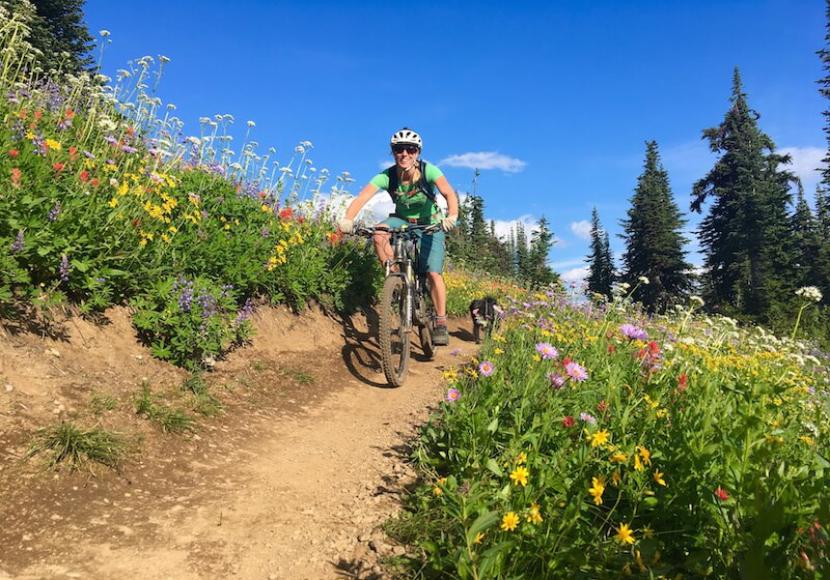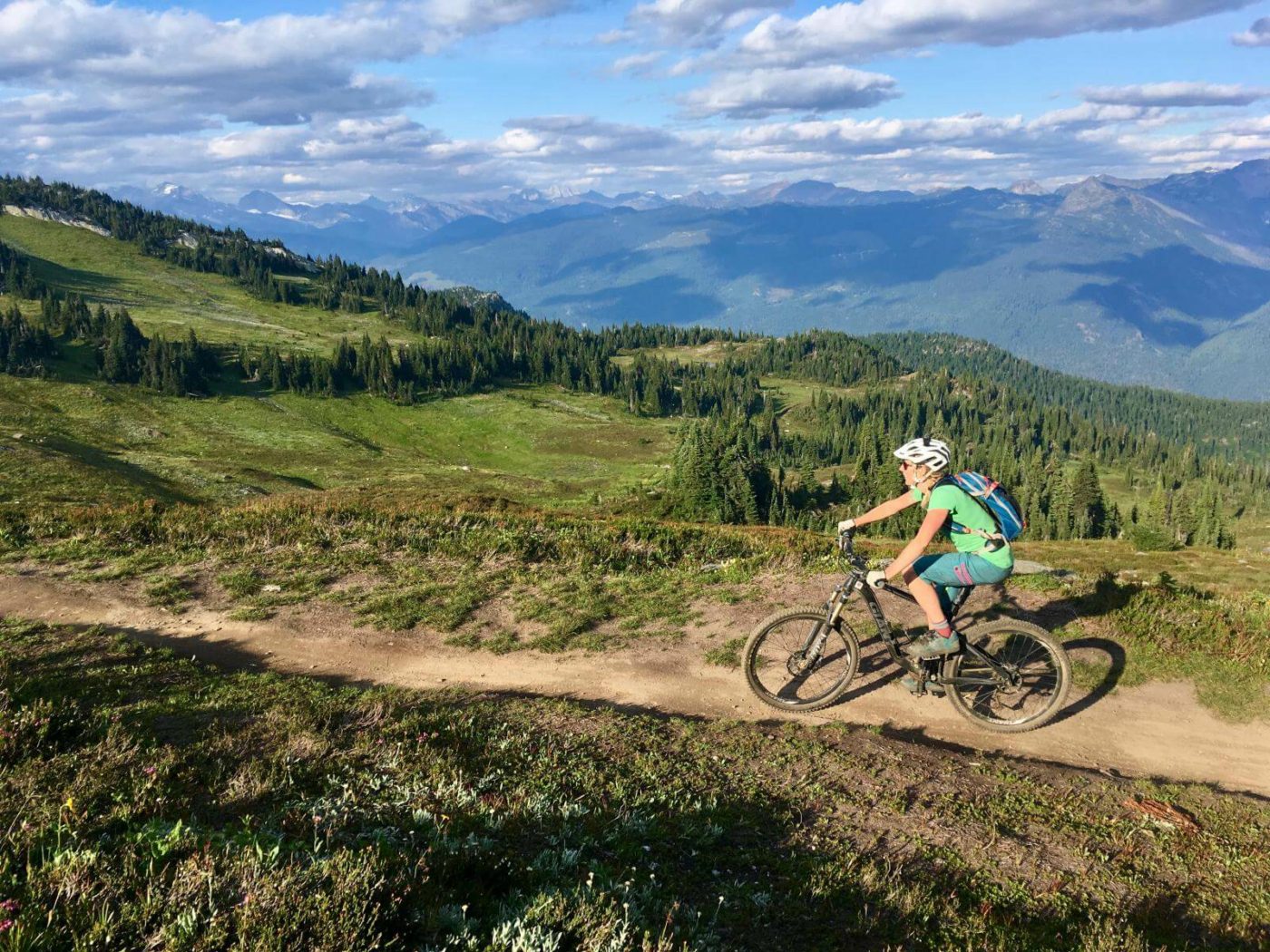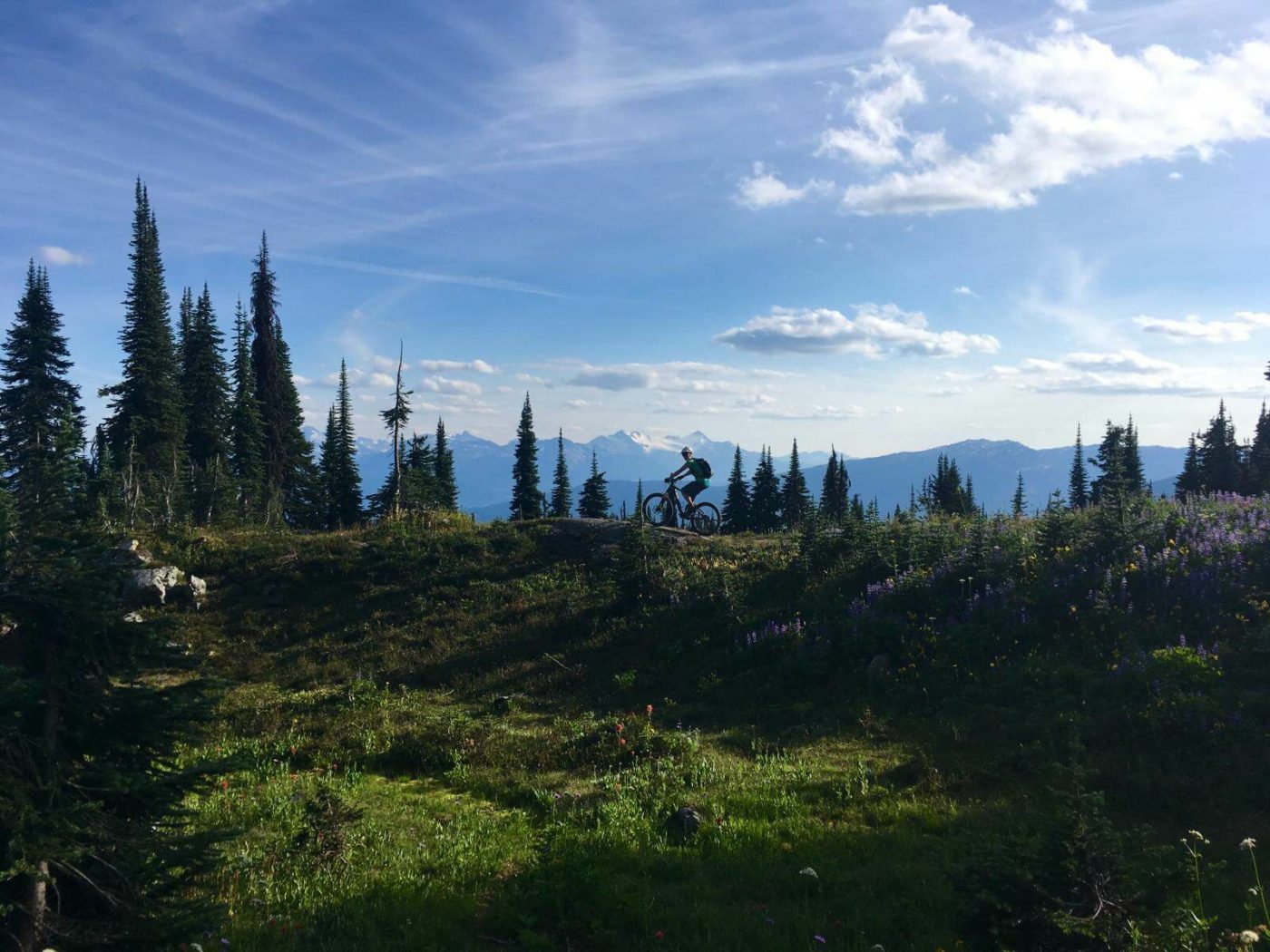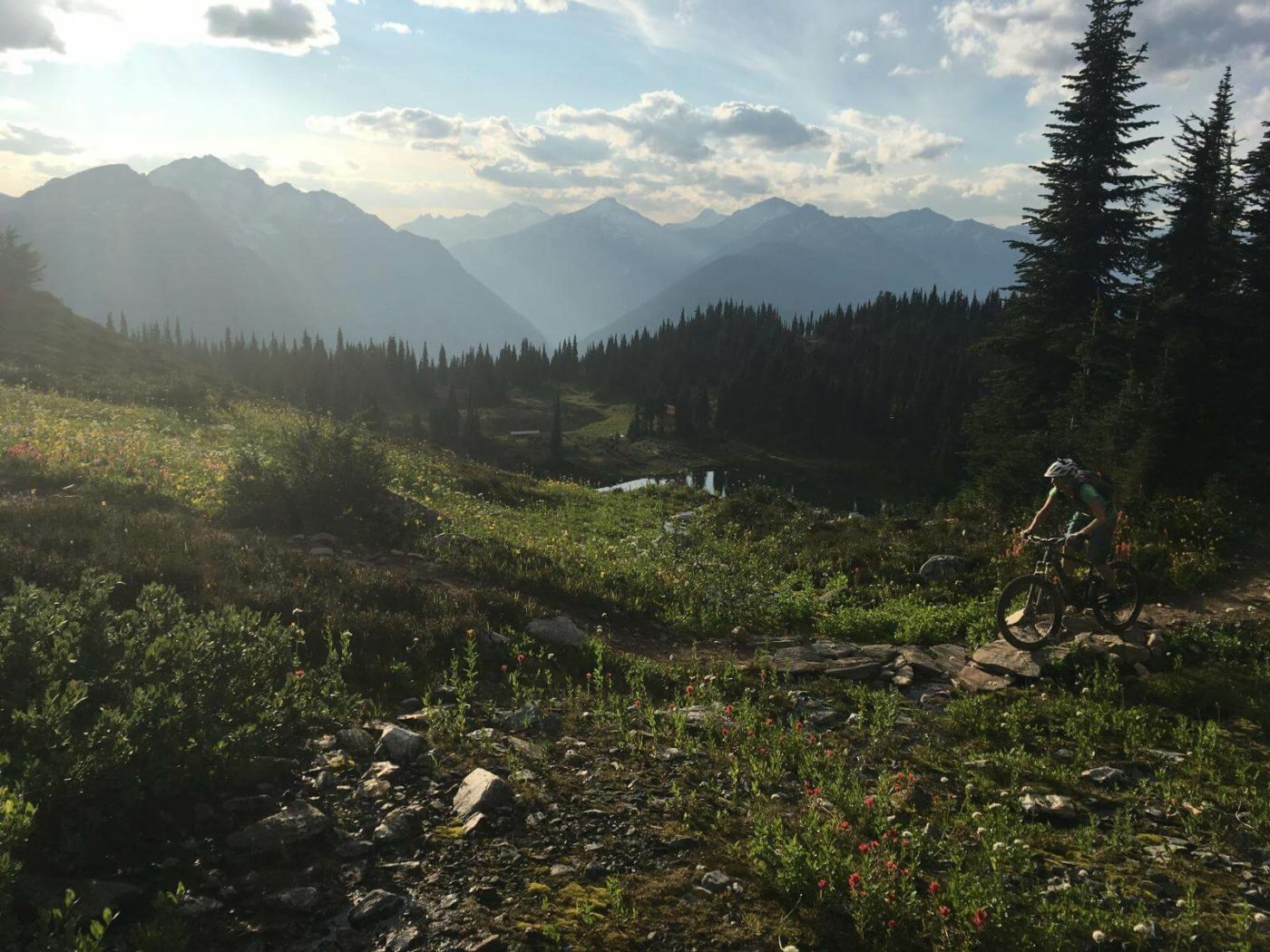September 22, 2017

Today’s guest post is from Robyn Goldsmith.
British Columbia is home to an increasing number of absolutely spectacular alpine mountain bike trails. Among others in BC, Rossland has the Seven Summits, Revelstoke has Frisby Ridge and Keystone, and Whistler has the newly built Lord of the Squirrels. Mountain biking in sensitive alpine areas is controversial for good reason. Some alpine trails are purpose-built for hiking, and bikers have changed the character of those trails by riding them. As alpine riding increases in popularity, its impact also increases. However, by adhering to general rules of conduct and respecting the alpine environment, we can help ensure that we don’t destroy alpine trails and that they stay open for riders to enjoy in the future.
The Dos:
1. PACK OUT YOUR TRASH
Yes, I know it seems obvious, but it’s the most obvious human impact and quickest way to enrage people. Be mindful of your granola bar wrappers, your stray gloves, and anything else you bring with you.

2. DONATE TO THE CLUB THAT MAINTAINS THE TRAIL
Alpine trails are incredibly expensive to build and maintain, and see a lot of use over a relatively short season. If you’re not sure who maintains the trail, check on Trailforks and look for the ‘Trail Karma” button.
3. RESPECT ALPINE WILDLIFE AND PLANTS
Don’t leave food out to attract animals. Don’t approach wildlife, and stay on the trail to protect sensitive plant life.

4. RESPECT TRAIL CONDITIONS AND TRAIL CLOSURES
If a section is muddy, don’t widen the trail by riding around it. If you know the trail has been hammered by rain, consider riding elsewhere. Likewise, if a trail is closed, stay off of it.
5. PROVIDE TRAIL CONDITIONS REPORTS
If you encounter a problem on the trail, contact the local mountain bike club and let them know or create a report using the Trailforks app.

6. BRING ADEQUATE GEAR
Be prepared for a long day and weather that can change quickly. You don’t want to be caught 12 km out with a flat and no spare tube, standing in the pouring rain… with no rain jacket.
7. BRING A VEHICLE THAT CAN HANDLE THE ACCESS ROAD
A lot of British Columbia’s alpine mountain bike trails are accessed by way of fairly rough logging roads. You *may* be able to make it in a low clearance vehicle, but why bother with the hassle and potential for disaster?

Don’t Do These Things:
1. DON’T BE A DICK!
Use common sense. Be respectful. As a mountain biker choosing to ride alpine trails, you are representing the entire mountain bike community up on the mountain. Yield to hikers, and leave the trail the way you found it… or in a better condition for the next rider.
Alpine riding is the whole package — beautiful views, great trails, and physical challenge. As it grows in popularity, we mountain bikers have a responsibility to respect the fragile alpine environment.
Happy trails, everyone!
About the Author: Robyn enjoys all things outdoors and regularly blogs about and photographs her adventures. She lives in Revelstoke, BC, where she works as a lawyer. Follow Robyn on Instagram, and on her blog, Scenes from the Trail.
